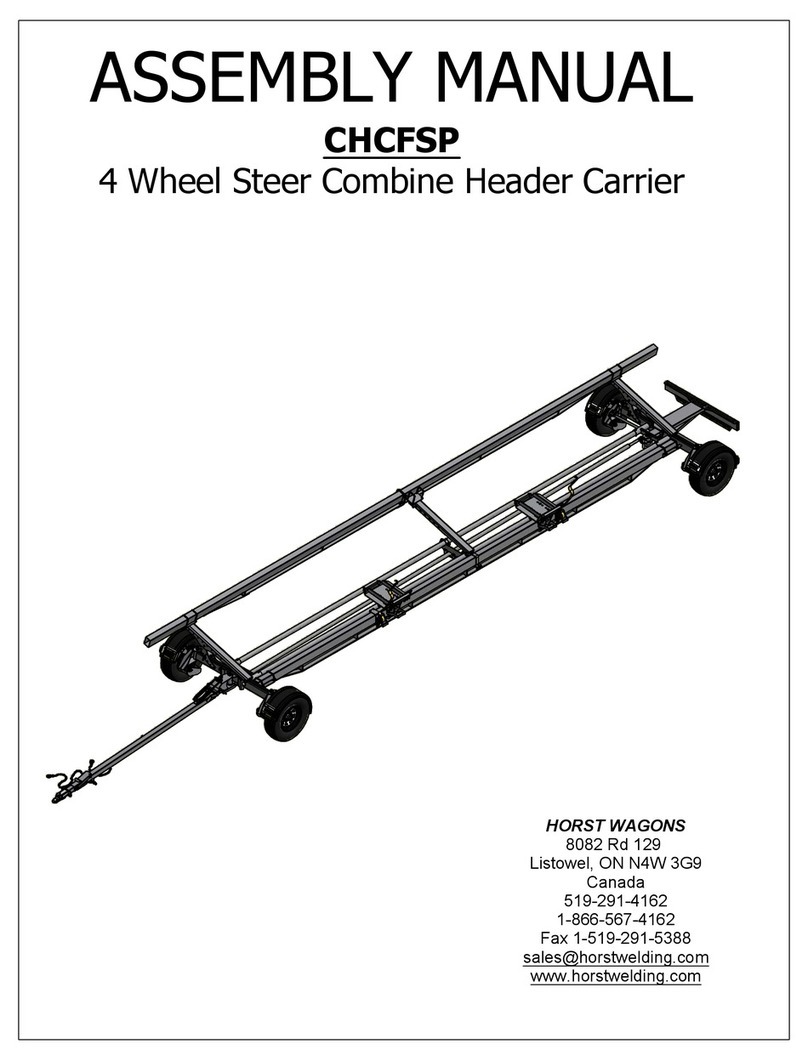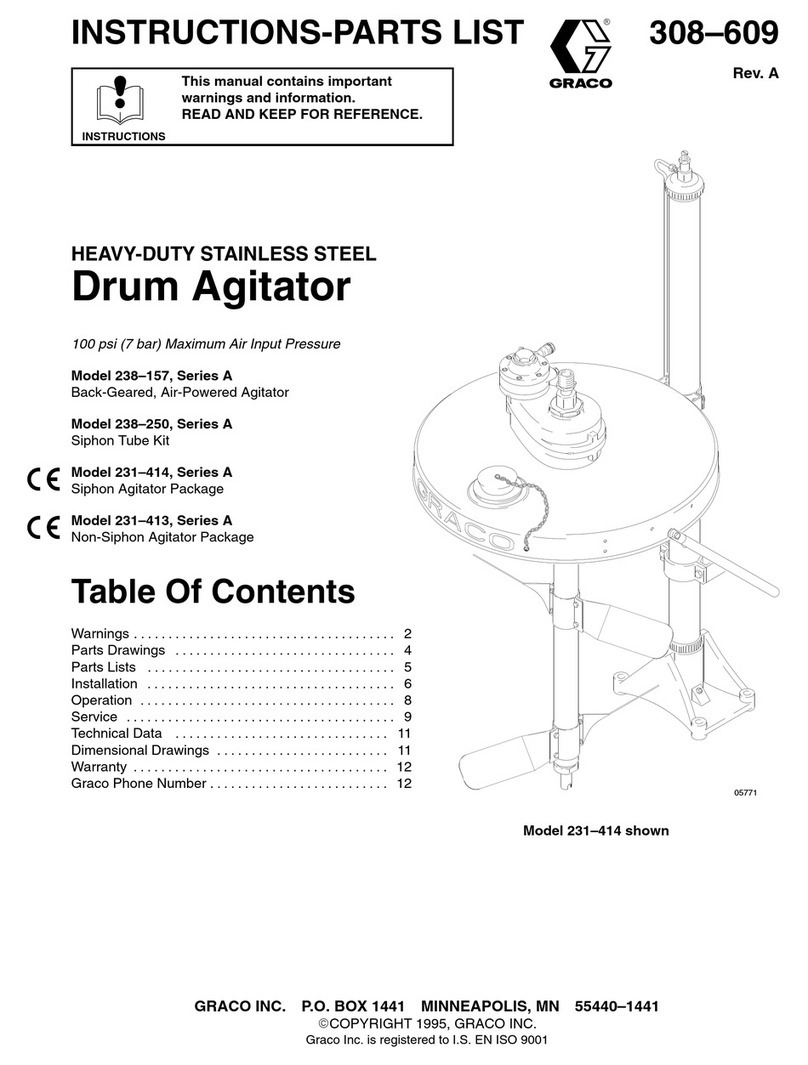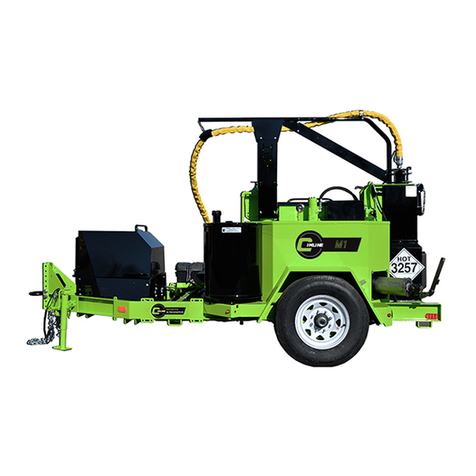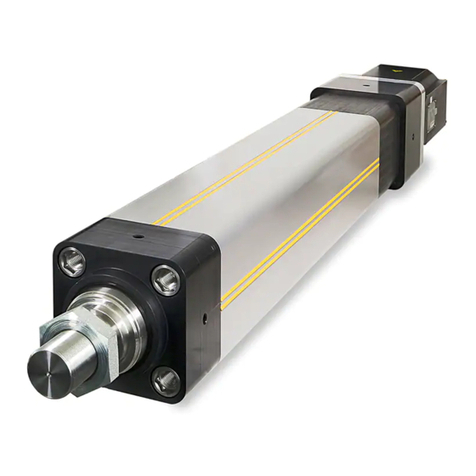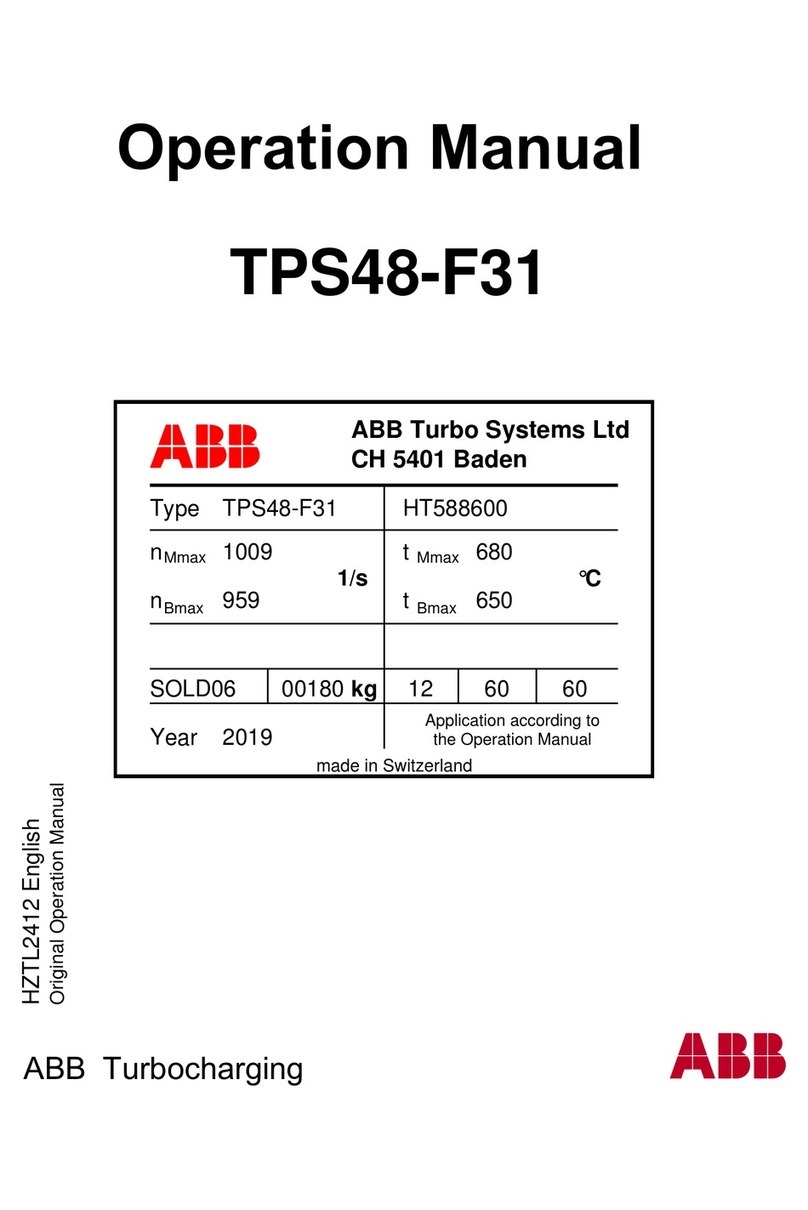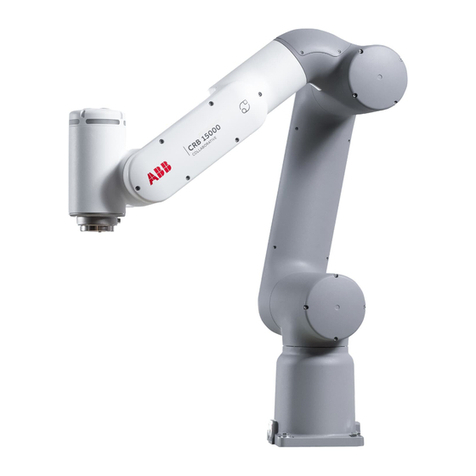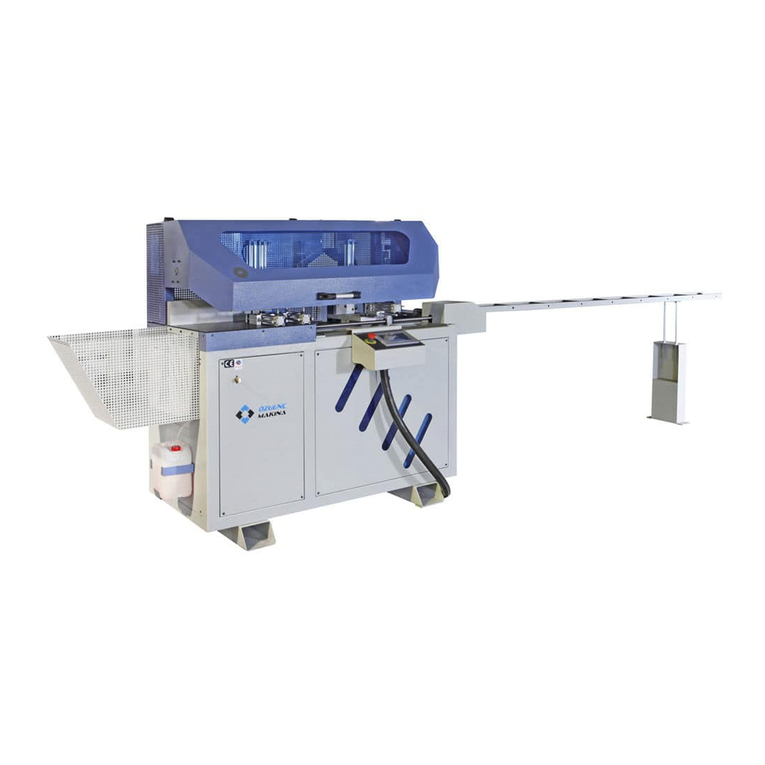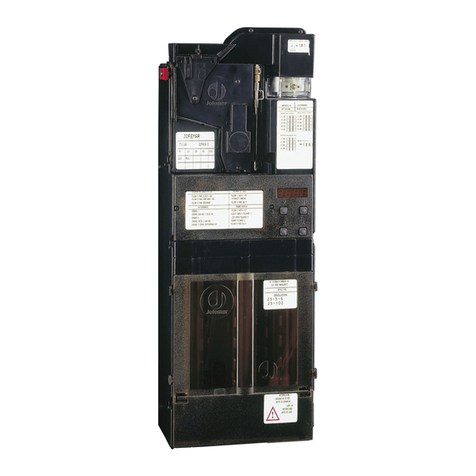SUSTAINIAC STEALTH PRO User manual

SUSTAINIAC
STEALTH PRO
INSTALLATION
GUIDE

CONTENT:
1. HOW IT WORKS
2. RETROFIT INSTRUCTIONS
3. SUSTAINIAC CIRCUIT
INSTALLATION
4. PRIMARY INSTRUMENT CHECKOUT
5. SUSTAINER CHECKOUT AND
ADJUSTMENT
6. TROUBLESHOOTING GUIDE

1.
HOW IT WORKS
First, the Sustainiac® PRO Sustainer electronically amplifies
and processes the pickup signal of your instrument. Then this
amplified, processed pickup signal is sent to a patented
magnetic string driver transducer (driver), which replaces
your existing neck pickup. The driver emits a pulsating
magnetic field in synchronization with the musical string
vibrations. This pulsating magnetic field adds vibrational
energy back into the strings during each vibration. Vibration
energy is normally lost as friction, causing the notes to die
out. By adding energy during each string vibration, the
vibrations are sustained indefinitely. A single, 9-volt alkaline
battery powers the system for about 20 hours of combination
sustaining/normal playing. More or less time, depending on
how much you use the sustainer. When the battery dies, your
instrument will not continue to function normally. The neck
pickup function will cease before the sustain function.
MAGNETIC STRING DRIVER TRANSDUCER: The driver is
the size of a single-coil pickup or a full- size humbucker
pickup, depending on the model you select. Color choice is
black or white. 7-string is also available (black only). When the
sustainer is OFF, the driver functions as a humbucking active
neck pickup. You can easily change circuit board settings for
humbucker or single-coil sound. The magnetic field that the
driver produces can cause interference with nearby pickups.
Therefore, the sustainer automatically selects the bridge
pickup when the sustainer is on. Our unique (patented)
Bilateral Driver design almost totally eliminates this

undesired characteristic that is typical of other sustainer
drivers.
SPACING: The driver should be located at least 3.5 in. (90
mm) from the bridge pickup (center-to-center). The closer this
spacing, the greater the tendency to oscillate (heard as
squealing). We don’t recommend any guitar having more than
24 frets for any electromagnetic sustainer. The driver must be
perpendicular to strings, not set on a slant (as with a Strat
bridge pickup for instance).
ELECTRONICS: The sustainer electronics consist of a single
small, prewired circuit board. This measures 1.1 in. x 3.75 in.
The board fits on edge into most electronics cavities. In Strats
and many Ibanez guitars, it fits between the pickup selector
switch and the pots. (See installation drawing.) Your existing
electronics cavity must be rewired to accept the supplied
circuit board and switches in order to install the Sustainiac
Stealth PRO.
BATTERY: A single 9-volt alkaline battery powers the Stealth
PRO. If you don’t want to route a cavity into your guitar to
mount a quick-change battery holder (optional), you can
consider putting it in the tremolo cavity. Move the 3 tremolo
springs over to one side. The battery will fit into this space on
many guitars. Minor routing will often be necessary. You can
order a quick-open trem cavity cover from us for a fast battery
change. (Low battery indicator: Neck pickup function will
cease to function at about 7-7.5 volts.)
BATTERY DISCONNECT: A stereo output jack is supplied
which disconnects the battery if your normal guitar cord is not
plugged in. This stereo jack replaces your existing instrument
jack. The green wire on the 10-pin connector connects to the
jack ring terminal. When a mono guitar cord is plugged in, the
green wire is connected to ground. If the sustainer POWER
SWITCH is turned OFF, the sustainer is now in Standby
mode, and the driver preamp is ON so it can function as a

pickup. The unit draws about 3-5 milliamperes (ma) in
standby mode to run the neck pickup preamp. You must have
both the instrument cord plugged in, and the sustainer power
switch turned on in order to activate the sustainer. You must
remember to unplug the guitar when not using it, or the
battery will slowly drain in about 100-200 hours in standby.
For those guitars that have active pickups (such as EMG’s) or
piezo preamps that run on their own 9-volt battery, an
optional 9-pin jack must be ordered to insure that both
batteries are completely disconnected when no plug is
inserted into the jack.
POWER AND HARMONIC CONTROLS: The Stealth PRO has
two main controls: The ON/OFF switch and the HARMONIC
MODE control. These can be push-pull or toggle controls.
Your choice. We supply a 25K drive pot with the toggle option
when appropriate.
ON/OFF CONTROL: The POWER switch, a potentiometer/
switch combination part, turns the sustainer ON by pulling out
on the knob (or can be optional toggle switch). The bridge
pickup is automatically selected when sustainer is ON. A
250K pot is included in kits for guitars with single-coil bridge
pickups, 500K for bridge humbucker guitars. The pot portion
of the control can then be used for the original volume or
tone function, since the control uses only the switch portion
of the control (becomes master tone on a Strat or Ibanez).
Optionally, you can use a mini toggle switch for ON/OFF
control.
HARMONIC/GAIN CONTROL: The HARMONIC/GAIN control
is a 250K ohm pot/switch combination. When pushed in, it
produces either FUNDAMENTAL or HARMONIC string
vibration, depending on how it is rotated. Rotate it full right
(clockwise), and you get mostly fundamental string vibration.
Rotate it full left (counterclockwise), and you get intense
HARMONIC string vibration. Rotate it toward center from
either full setting, and the sustainer gain decreases toward
zero. As the sustainer gain is decreased, slower fade-in of the

sustain function will be realized. (Optionally, use a 3-position
toggle switch, no extra cost.)
Pull the knob out, and you get two more modes: Full right
(clockwise) = MIX mode is actually a more subtle harmonic
mode. MIX produces mostly fundamentals on high notes, and
mostly harmonics on low notes. Full left (counterclockwise)
will produce yet another harmonic mode on some notes. This
control uses both the pot and switch portions of the control.
Or, you can use the optional 3-pos. toggle switch control. MIX
mode is in the middle position with the toggle control option.
NECK PICKUP BOOST: The white/violet wires (10-pin) will
boost the neck pickup sound if they are both connected to
ground with a DPDT switch (toggle or push-pull). This gives a
humbucker sound to the pickup. If these wires are not
connected to ground, then the sound is more like a Strat
single-coil.
CONNECTOR COLOR CODE AND WIRE FUNCTION DIAGRAM

2.
RETROFIT INSTRUCTIONS
CAUTION #1: Make sure that your body is discharged of
static electricity before handling or working on the
sustainer circuit board. A static spark can damage
semiconductor components.
1. Check to make sure you have received all of the parts necessary to
install the sustainer.
(1) CIRCUIT BOARD (1.1 in. x 3.75 in.) (2) DRIVER TRANSDUCER (black
or white, SC or HB size, appropriate mounting screws, 2 springs,
magnetic field cancellation tab, 0.5 x 0.85 in. Strats only (not needed
on other guitars) (3) MISCELLANEOUS PARTS BOX
WIRE HARNESS 10 pin connector, 8 pin connector. TWO SWITCH/
POTENTIOMETERS, one for POWER and one for GAIN/HARMONICS
OPTIONAL: Toggle switches can replace either pot/switch control at
your option STEREO OUTPUT JACK type dependent on original
guitar jack, 9-pin for active pickups SHIELDED WIRE for tone control
hookup or output wire EXTRA HOOKUP WIRES: When you trim the
harness wires short, (as you should) you will have lots of extra wire.
WIRING ACCESSORIES: heatshrink tubing for wire splices, nylon wire
ties 9V BATTERY SNAP; or, optional quick-change battery case. Two
batteries needed if your guitar has active pickups such as EMG’s,
also 9-pin output jack to disconnect both batteries.

3.
SUSTAINIAC CIRCUIT INSTALLATION
CAUTION #2: Do not install a battery until the entire
installation and steps 1-3 of PRELIMINARY INSTRUMENT
CHECKOUT procedure are finished.
CAUTION #3: Never solder any wires of the sustainer with a
battery installed!
2. Remove strings and pickguard (if any) from the instrument.
Or, simply remove bolt-on neck or tremolo after loosening
strings. First, capo or tape strings to the neck near the nut to
prevent a tangled mess.
3. Some pickguards are covered with conductive foil to shield
from hum pickup. This must be removed from the whole area
around the neck pickup (driver) and also bridge PU. This
shielding causes magnetic interference with the driver that
causes squeal and grunge in the output signal. “Mirror”
pickguards and trim-rings can cause problems, and should be
replaced with non-metallic ones.
SOLDERING: Use a good quality pencil-type soldering iron,
preferably of 25 to 50 watts capacity. The best is to use a
controlled temperature iron, set at about 650oF (340oC). Do
not use a clumsy “gun” type iron. NEVER use acid-core
solder. Use only rosin-core solder, intended for electronic
use.

4. PLAN YOUR INSTALLATION BEFORE BEGINNING.
**ULTRA IMPORTANT**: The 8- pin connector should be
oriented close to the pickup selector switch On Strats,
Ibanez and Les Paul-type guitars, the circuit board placement
should be exactly as shown on the hookup diagram. On
Strats, be sure to wrap the wires coming from the 10-pin
connector around the ON/OFF switch to keep the wiring short
and neat. Otherwise, it won’t fit into the cavity. For other
guitar types, plan the installation carefully. .
Keep the driver wires short (brown/gray wires on 10-pin
connector). Keep the white/orange wires on the 8- pin
connector (bridge pickup signal) short. **** Keep all pickup
signal wires away from the circuit board by at least 1⁄4 inch.
Especially, white and orange 8-pin.**** Shield your output
jack tip wire, or keep it physically away from the circuit
board.
The violet/gray wires on the 8-pin connector should be
twisted together, and kept away from the guitar pickup signal
wires.
The circuit board itself should be placed on its edge. This
keeps it from lying on top of the guitar signal wires and
controls, radiating distortion/grunge into the guitar signal. If
the board must lie flat on top of guitar signal wires or the
controls, consider shielding the board. To do this, you must
Some sustainer signal wires can radiate electronically into
your guitar pickup signal wires. This is known as “crosstalk”.
The result is that a “grunge” (distortion) is heard in your
guitar output signal. It can even cause oscillation, which is
normally heard as a high-pitched squeal. In order to
minimize crosstalk, remember the following: CROSSTALK
PREVENTION MUST DOMINATE YOUR ENTIRE
INSTALLATION. So, please read the following notes
carefully:

first cover it with copper tape. Then, connect the copper tape
to ground with a wire. Finally, cover the copper with insulating
tape. But test it first before going to all this trouble.
Some wires don’t cause grunge or oscillation: Both BLUE
wires and the ORANGE wire on the 10-pin connector only
carry middle and neck pickup signals. These signals are not
heard when the sustainer is running. The black (ground), red,
yellow, green wires generally don’t cause grunge problems,
either.
5. STEALTH PRO CONTROLS: Remove the controls from your
guitar that will be replaced with Sustainiac switch/pot
controls. On Strats, a single MASTER TONE control (attached
to ON/OFF switch) will replace the original NECK TONE. This
will control the tone of all the pickups on the instrument.
TOGGLE SWITCH OPTION: On Strats, you won’t have much
room to use two toggle switch controls without removing at
least one of the tone controls, unless you are willing to do
some body routing.
6. For Strats and Ibanez with pickguard, mount the Stealth
Pro push-pull switch/pot controls to the pickguard exactly as
shown in the diagram. The solder lugs on the two controls
should face each other to minimize wire lengths. Arrange
signal wires to provide maximum distance from the circuit
board. For Ibanez, consider adding a 3rd hole between
volume and tone for Harmonic Mode control, so you don’t
have to lose your tone control. (In other words, make it like a
Strat.)
7. If a tone control is replaced by the ON/OFF switch (as with
Strats and 4-pot Les Paul types), transfer the tone capacitor
from the original pot, and attach to the new one as shown.
Guitars that only have two pots must give up either the
VOLUME or TONE function, unless another control is added.
8. NECK PICKUP: Remove neck pickup, and replace with
Sustainiac driver.

9. DRIVER: Route driver wires to the ON/OFF switch and 10-
pin connector. Solder driver shield wire to ON/OFF pot body
or tab. Do not try to solder to the switch body (upper square
portion), because internal plastic parts will melt.. If you have
EMG pickups (and some other types), you will have to
reverse the red/black driver leads from the drawing,
because these pickups have reverse polarity from normal.
10. Attach the two wiring harnesses to the respective
connectors. Keep the wires as short as possible to avoid
electrical crosstalk which results in grunge in the pickup
signal. In Strats and Ibanez, the installation won’t fit in the
electronics cavity unless the wires are kept short.
11. BEGIN WIRING THE SUSTAINER AS SHOWN IN THE
HOOKUP DIAGRAM.
SUSTAINER WIRING CAUTIONS (grunge/oscillation
prevention) : READ STEP 4 AGAIN.
•Keep the Sustainiac signal wires as short as possible
(brown, gray on 10-pin connector,
Har./Gain, violet/gray on 8-pin connector)
•Keep guitar pickup signal wires away from sustainer
signal wires and also away from the
circuit board itself. Keep the bridge pickup signal input
wire (white/8-pin con.) as short as
possible, and away from the STEALTH PRO circuit
board and the violet/gray wires. Same for orange wire,
8-pin connector.
•Guitar pickup signal wires include any that are
attached to the tone or volume controls, or
the output jack. Shield the guitar output wire, or keep it
away from white/blue/orange 8-pin.
•Where the driver red/black wires protrude from the
shield, they must be kept away from the

guitar signal. Driver red/black unshielded length
should not exceed 1 inch (25 mm).
12. HARMONIC/GAIN CONTROL WIRES (violet/gray): (See
drawing, page 6) Twist these
together before connecting to the HARMONIC/GAIN control.
These wires must not run near any guitar
signal wire. In some installations where the violet/gray wires
must run a long distance, they themselves can
be shielded. This requires replacing the gray/violet wires with
a shielded pair. It usually isn’t necessary,
except for extreme cases.
First, pull the violet/gray wires “up” (not out) from the
connector prongs. They are held by V-shaped prongs, which
pierce the wire insulation, making contact with the inner
conductor (“insulation displacement”). Then, carefully press
the red/black wires from the shielded cable into the V-shaped
prongs of the insulation-displacement connector using a thin
screwdriver. The two prongs will cut into the insulation,
making contact with the wire strands without soldering. Be
very careful not to damage the connector (or your fingers).
13. MASTER TONE POT: On Strats and Ibanez pickguards, the
connection from the output on the volume pot to the tone pot
runs parallel to the sustainer circuit board. Therefore, the
tone connection must be shielded. If you don’t do this, you
will get grunge in the output signal. Use the extra shielded
wire provided as shown in the diagram.
14. OUTPUT JACK: Remove existing guitar jack, and replace
with supplied stereo jack. For Strats, make sure that none of
the jack terminals touch the conductive jack housing. You will
have to bend them in to prevent touching. Connect a black
wire (8-in. for Strats) to the jack ground terminal. The green
STANDBY wire from the 10-pin connector connects to the ring
terminal. The best way is to use part of the 2-conductor
shielded cable supplied (shield to ground terminal, red to tip),

and use the black wire to connect the ring terminal to a
shortened green STANDBY wire.
15. GROUND CONNECTIONS: The ground wires are best
attached to the pot bodies or the small tab on the switch
housing. (Don’t try to solder to the square switch bodies,
because internal plastic parts will melt. This will destroy the
switches). All pot bodies must be grounded. Solder black
ground wires to all pot bodies, and also to other guitar parts
that need grounding. Make sure that both black wires from
the 8- pin and 10-pin connectors are grounded. The black
wire from the 10-pin connector must be soldered to the same
exact ground point as the battery (-) wire. If they are
attached to different locations, grunge will appear in the
guitar output signal due to pulsating ground currents.
16. PICKUP SELECTOR SWITCH: For Strats and Les Paul type
guitars, rewire pickup selector switch as shown, keeping all
pickup signal wires short and away from Sustainiac wires and
circuit board. IMPORTANT: On Strats and other guitars having
a lever-type pickup selector switch, note that the switch
section (pole) having the bridge pickup connection has no
other pickups attached to it. You can use any type of pickup
selector switch you choose, but no other pickup must be
allowed to connect to the bridge pickup when the sustainer is
on. Since 3-position Gibson-type selector switches have only
one pole, this is accomplished differently as shown on the
appropriate hookup diagram. On guitars having individual
pickup selector toggle switches, the bridge switch is
separated from the neck and middle pickup switches. In
operation the internal electronic switch on the sustainer
circuit board connects the orange OUTPUT wire (8- pin
connector) to the white wire (bridge pickup) when the
sustainer is ON, and to the blue wire (neck/middle pickups)
when the sustainer is OFF.
17. INITIAL TRIMPOT SETTINGS: Set the neck pickup trimpot
(near 10-pin connector) to a rotation of about 12 o’clock. This
will set the sustainer neck pickup volume to the correct levels

for most normal output pickups. Set higher to match hot
pickups. Set the SUSTAINER GAIN trimpot (near 8-pin
connector) to about a 11 to 1 o’clock rotation. Too high a GAIN
setting can cause squealing in Harmonic Mode. The small,
metal trimpot adjusts HARMONIC MODE gain only. It
doesn’t affect NORMAL or MIX mode. However, the
SUSTAINER GAIN trimpot affects all modes.
18. Do not install a battery until steps 1-3 of the
PRELIMINARY INSTRUMENT CHECKOUT procedure is
finished.
19. Check to make sure that you do not have any wiring
mistakes. After everything is checked out and working, you
can use some of the supplied wire ties to make the
installation neat, and also to keep guitar signal wires away
from sustainer signal wires.

4.
PRELIMINARY INSTRUMENT CHECKOUT
NOTE: Don’t install a battery yet.
1. Set HARMONIC/DRIVE pot on the guitar body to maximum
right (clockwise) for maximum gain in FUNDAMENTAL mode.
Make sure this switch is PUSHED IN. (OPTIONALLY, set toggle
MODE switch to FUNDAMENTAL position.) Set neck pickup
trimpot (near 10-pin connector) to a 12-1 o’clock setting. 2. Set
your guitar amplifier on CLEAN setting, with the treble control
advanced and midrange control reduced. This will allow you
to better hear grunge and distortion that might be picked up
from the sustainer. 3. Before installing a battery, make sure
that the battery wires are not reversed. Make sure the power
switch is pushed IN (off). Make sure the connectors are
plugged in correctly. If you have a meter to measure current,
set it to 1-ampere full scale and put it in series with the battery
(+) terminal. 4. Now, install a 9-volt ALKALINE battery. Don’t
use Nicad, which only has 7.2 volts. Feel the battery. If it gets
warm or current meter “pegs”, remove it immediately, and
recheck wiring. 5. Plug in a mono guitar plug. With the ON/
OFF switch pushed in (sustainer OFF position), make sure
that the instrument functions normally. Exercise the pickup
selector switch to make sure the pickups work OK. The driver
should function as a pickup when the sustainer is off. It needs
to be set for proper level by adjusting NECK PICKUP
TRIMPOT if necessary. Also, test the instrument volume and
tone controls for proper operation. Standby current should be
3-5 ma (milliamperes). 6. If you have a Strat (with slanted
bridge pickup), insert the MAGNETIC ADJUSTMENT TAB
between the driver and cavity to a position at the center as

shown in the diagram below. We don’t supply one for other
guitar types unless you specifically request one.
DETAIL OF MAGNETIC TAB INSTALLATION: We only supply
this for Strats and knockoffs having a slanted bridge pickup .
It can face the neck or face the bridge (see drawing). Set the
instrument amplifier to a clean setting, and turn up the treble
so you can easily hear distortion. Move the tab is to
the position where noise and squeal is minimum. Don’t use
a metal object to move the tab because it interferes
magnetically. A good way to do it is to move the tab with the
fingers while sustaining the big E-string. The tab can be
secured in place with small dab of silicone adhesive or
double-stick tape after positioning. On some installations,
there is sufficient friction to hold it in place.

5.
SUSTAINER CHECKOUT AND
ADJUSTMENT
7. Turn the sustainer ON by actuating the power switch. Listen
for squeal or “grunge” coming from the amplifier. (See step
#11 below.) Make sure that only the bridge pickup (PU)
functions when the sustainer is on by gently tapping the pole
pieces all of the pickups with a steel object like a screwdriver
blade. 8. If you have a current meter to measure battery
current, idle current should be about 3 or 4 ma. Full power
sustain of most notes should be about 20 to 60 ma. after first
shooting above 100 ma for a short time. Actual current
depends on notes played. Higher notes and harmonics draw
less current. Check troubleshooting guide if battery gets
warm or if current remains above 60 ma. 9. Most notes
should sustain in FUNDAMENTAL mode. If you don’t get
mostly strong fundamentals, make sure the violet/gray wires
are connected as shown in the hookup drawing. If this is OK,
then the driver leads (red, black) should be reversed. (For
EMG pickups, leads MUST be reversed.) Harmonic mode
occurs when the violet/gray wires are shorted together by the
HARMONIC MODE control pot (or switch, if using a toggle
control).

10. GRUNGE/SQUEAL TEST AND ADJUSTMENT OF
MAGNETIC FIELD CANCELLATION TAB:
This is mainly for Strats only. If you have squeal and/or
grunge in your guitar signal, you might need to add a tab.
More likely, the problem will be due to poor wire placement.
For Strats, place the tab in the best position (see diagram
page 6) to remove distortion, hiss, and squeal, with your
instrument amplifier set to a clean setting. Check in both
FUNDAMENTAL mode (clockwise), then in HARMONIC mode
(counterclockwise). Start with the tab in the center position.
The tab can be placed on either the neck or bridge side of
the driver. Carefully and slowly slide the moveable magnetic
field cancellation tab to the best position to minimize squeal
and distortion. If you have a tap switch on a bridge
humbucker, select the tap so you can hear the distortion
better. Use trial and error to determine this. Use only a plastic
or wooden stick (or fingers) to move the tab. Do not use
metal, because it will affect the setting of the tab.

If you cannot make the squeal go away then go to the
TROUBLESHOOTING section, which follows. More
troubleshooting details are on the Sustainiac website, Stealth
PRO page or INSTALLATION page.
6.
TROUBLESHOOTING GUIDE
CAUTION: Remove battery before soldering any
connections to the circuit.
Your SUSTAINIAC® STEALTH PRO® sustainer has been completely
tested for proper operation. Since installation in your instrument
requires that you solder numerous connections, it is possible that one
or more tiny solder “bridges” can occur which short adjacent
connections. Check your work under a strong light, using a magnifier.
Double check each wire with the color-coded drawing.
SYMPTOMS:
Sustainer is dead:
•Check output jack for proper tip/ring connection. MOST
COMMON PROBLEM.
•Mono guitar cord must be plugged into guitar jack (not
stereo). (3-5 ma Standby)
•Make sure both sustainer ground (black) wires are connected
to pot bodies. (Many people connect battery (-) to black (10-
pin), then don’ t connect to a pot body.)

•Make sure output jack terminals not shorted to jack housing
or to each other.
•Check to make sure battery is good (+8 volts or greater) and
is wired in properly.
•Check that push-pull terminals are not touching electronics
cavity shielding material.
•Check driver shielded wires for solder short.
•Check circuit board connectors for pulled-out or improperly
connected wire. Also, check
for correct insertion of the connectors.
•Make sure yellow wire gets connected to ground when ON/
OFF switch set to ON position.
•If the circuit board is physically pressed tightly against the
pickup selector when you install a pickguard (Strat, Ibanez),
the insulation on the board can be punctured, causing
internal connections to be shorted to guitar ground or other
electrical contacts.
Sustainer “squeals”, pulsates or makes guitar signal
“grungy” (“static” or “dirty” sound mixed with signal)
•If squealing happens when you turn down the volume:
Put a 330 pF capacitor between volume control
high and middle terminals. This will stop it and also
make the signal sound better at low volume.
•White/orange wires of 8-pin connector not cut short.
They must be short to prevent crosstalk. See
Step 4.
•Metal foil or conductive coating located on pickguard
near driver and/or bridge pickup. This must be
removed from the pickup area, or the sustainer will not
function properly. Magnetic “null” adjustment of tab
will not be possible on Stratocasters. FOIL-COVERED
Table of contents
Popular Industrial Equipment manuals by other brands

Ro-Main
Ro-Main HERCULES' Arm 200S user manual
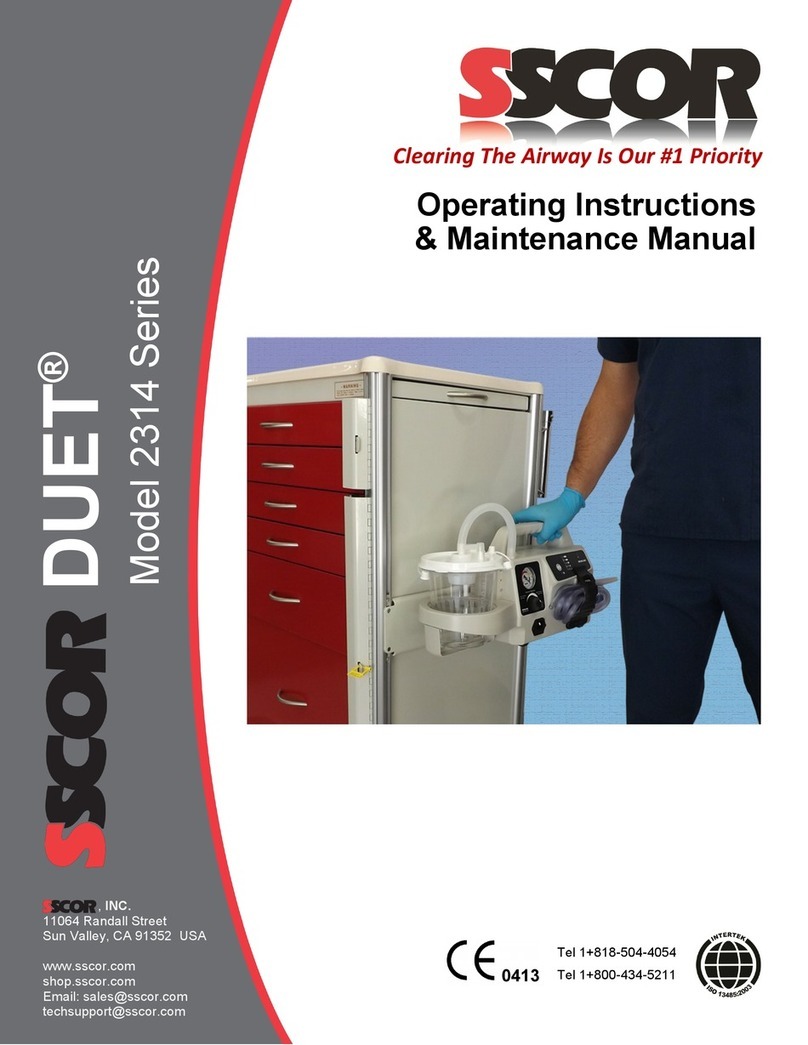
SSCOR
SSCOR DUET 2314 Series Operating Instructions & Maintenance Manual
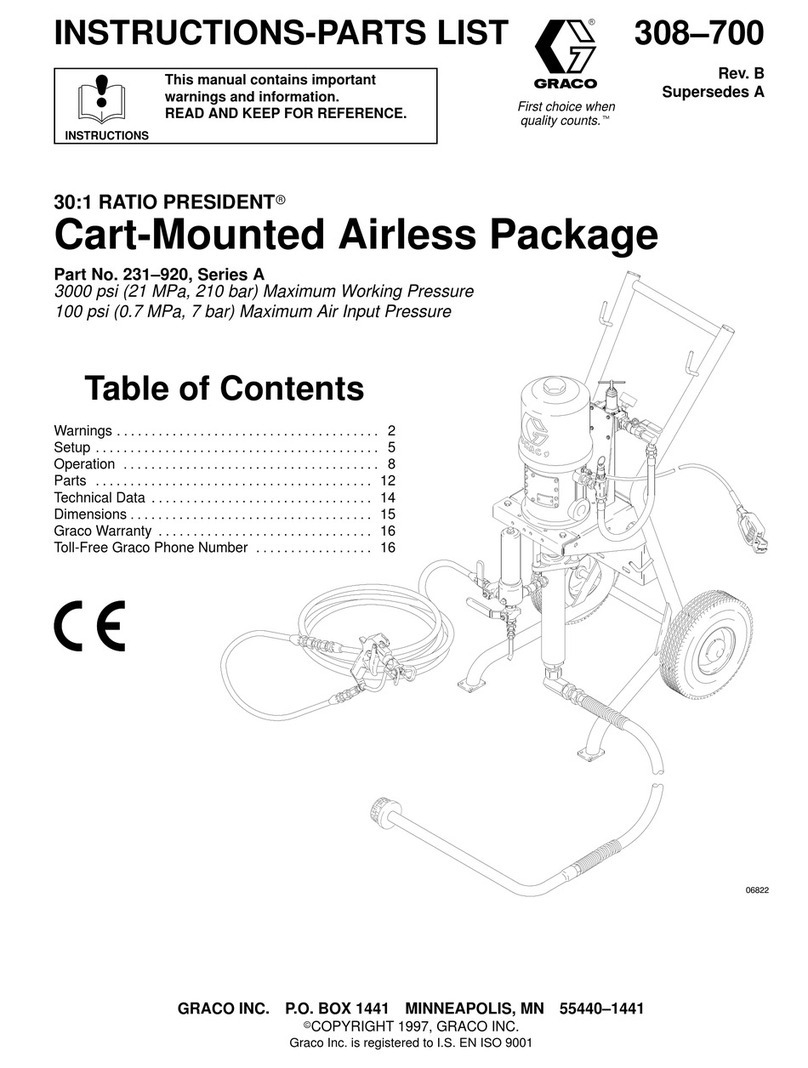
Graco
Graco PRESIDENT 231-920 instructions

Ormazabal
Ormazabal velatia cpg.0 General instructions
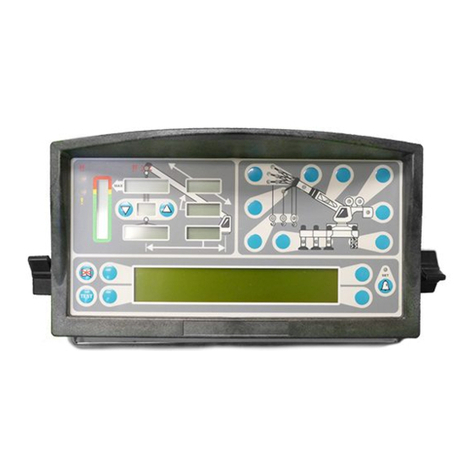
GREER Company
GREER Company MicroGuard RCI 510 troubleshooting manual
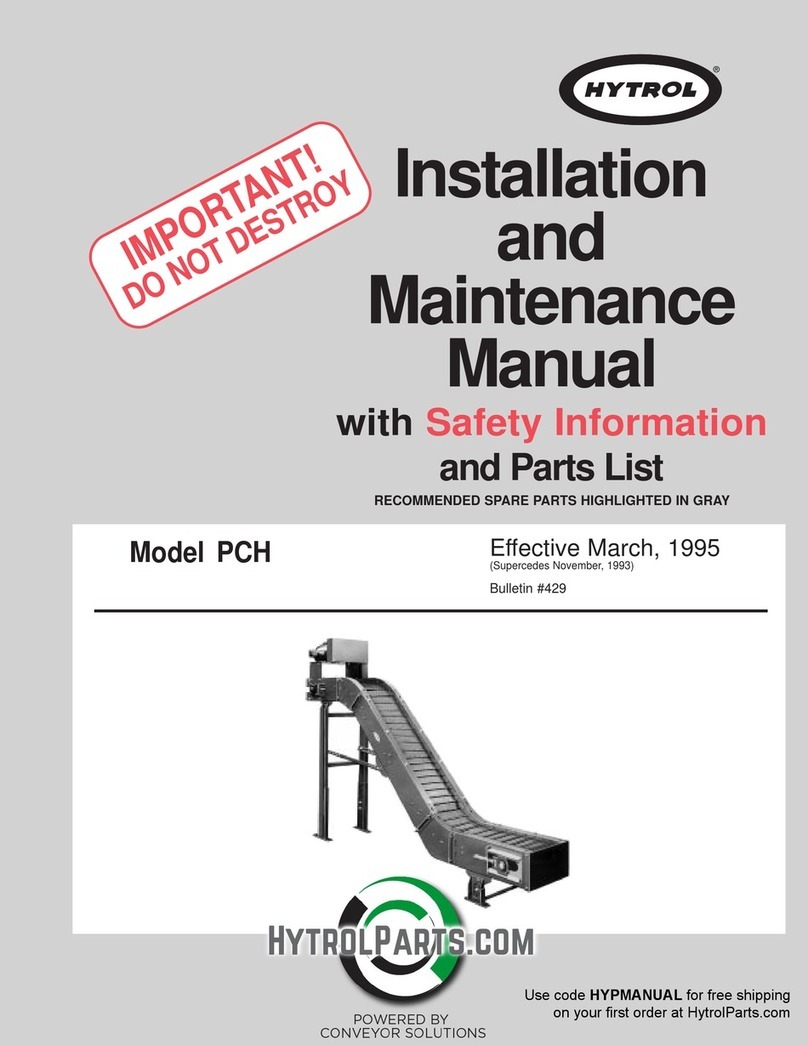
HYTROL
HYTROL PCH Installation and maintenance manual
